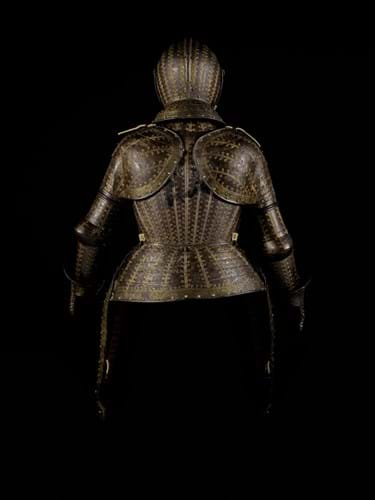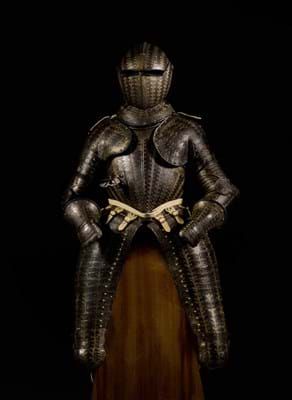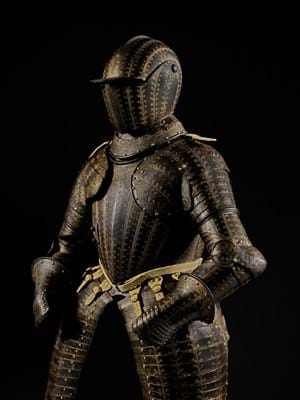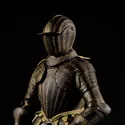When the three-quarter-length cuirassier protection was made c.1600-10, bows and crossbows were giving way to firearms and by the end of century such a style would be practically obsolete, with a last real hurrah in conflicts such as the earlier stages of the English Civil War.
Such armour is far from dead in modern-day auction terms, however – this particular set was hammered down at £880,000 (or £1,064,750 including premium) at the London auction house’s Treasures sale on July 5.
That price went far beyond the £300,000-500,000 estimate and is thought to be an auction record for 17th century armour.
West London arms and armour specialist Thomas (Tom) Del Mar, who helped to write the catalogue notes for the lot, said as an early 17th century decorated homogenous three-quarter armour it was “the best seen at auction for four decades”.
On sale day, initial interest in the room led to a bidding battle between a phone and online, with the latter – a European private bidder – emerging triumphant.
Great provenance
Henry House, senior director and head of furniture and decorative arts at Sotheby’s London, said the key drivers of auction value in provenance, condition and rarity contributed strongly to the result. “Everyone was saying to Tom and I it was the best suit of armour that had been on the open auction market since the Hever Castle sale in 1984,” he added.
In terms of provenance, the full title of the Treasures sale, ‘including property of the Prince of Prussia’, was particularly relevant to this armour. Thought to have been commissioned by an Italian nobleman, by tradition it is thought to have been owned by Joachim Friedrich, Elector of Brandenburg (1546-1608). The provenance then heads through a roll-call of Prussian nobility, including Friedrich Wilhelm IV, King of Prussia 1795-1861.
The quality and condition of the armour, probably made in the Renaissance centre of expertise Milan, was also excellent. Many sets of armour are not homogenous but this example was more or less intact as made.
House said: “That counts for a lot. There didn’t appear to be any replacement elements. Apart from changing colours and tones, it was offered just as it was made, which is rare for these things.”

Back view of 17th century three-quarter length armour sold in Sotheby's july 5 Treasures sale for a hammer price of £880,000.
Combat role
Many sets of armour were made for ceremonial use but this one was actually intended for mounted combat. The cuirassier was the descendant of the medieval mounted knight and ancestor of the heavy cavalryman.
“This was battle armour - not for parade or tournament - and it was incredibly heavy,” said House. “It has got the weight and the proof marks. You can see where it had been shot proofed to front and back.”
While there is no record of it being used in battle, House added that “there is no reason why it wouldn’t have been used in battle, absolutely. There is a big bash to the visor, which could be just down to it being bashed at some point, but it also could have been someone taking a whack - we can’t be sure, we just don’t know.”
When it comes to rarity, “so little has come to the market really”, said House. “More and more, they are in institutions or in those big collections which don’t come to market and, as I understand from Tom, more normally these things change hands privately, so it is rare to have one on the open market.”
Treasures hunt
Another factor in the result was perhaps the inclusion of the armour in the Treasures format rather than a dedicated arms and armour auction. This sale included five lots from the ‘Property of the Prince of Prussia’, which realised a combined premium-inclusive total of £4.4m, double their pre-sale high estimate.
House said: “The number of people at the viewing who stopped to look at it was amazing. They were taken by the beauty of the thing, not necessarily as armour collectors. The galleries were busy that week with Old Master collectors but the number of people who stopped to admire it was incredible.
“I think it was interesting to put it into the context of the rest of the Prince of Prussia pieces in the Treasures sale. I think it does help to put it up to a different level when you have things selling for similar levels around it.
“It elevates it, to as much as a work of art as a suit of armour.”











